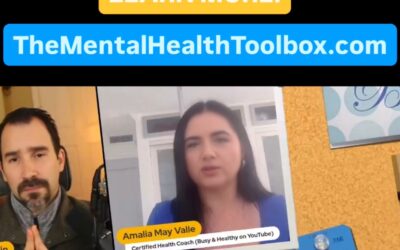I never would have thought that the simple act of not eating could be so empowering. Life changing, even.
When I was pregnant with my daughter two and a half years ago, I gained a LOT of weight. Like 50 pounds of it. That definitely was not all baby, although a good amount of it was water retention. Nonetheless, I was not worried at all, as I fully expected to lose all of the weight after giving birth. Breastfeeding makes you lose weight like crazy, right? Not in my case.
It was extremely difficult for me to lose the pregnancy weight.
Not that it was easy to stick to a diet or fitness plan of any kind when you are averaging 2-3 hours of sleep per night with a newborn. My well-meaning husband kept shoving chocolate into both of our mouths to help us both stay awake during those 2am feedings (yep my husband stayed up with me while I breastfed to help me to stay awake – he is awesome). We averaged at least one Toblerone chocolate bar per night. The large ones!
Needless to say, I gained even more weight during this time.
Little by little however, my daughter started sleeping slightly longer hours and breastfeeding for shorter stretches throughout the day. I started to get serious about losing the weight. It bothered me. I didn’t feel like myself anymore. Supermodel Adriana Lima famously walked the runway in the Victoria’s Secret fashion show only eight weeks after giving birth, right? It shouldn’t be too hard, I thought.
I pulled out all my old weight loss tricks that worked so well pre-baby when I needed to look slim for an event or had indulged too much over a vacation. I cut my carbs, drank lots of water, cut out sweets and exercised.
I barely lost any weight.
I decided that I need to get a bit more drastic and I tried the Keto diet. Keto worked well initially – I finally was able to start losing weight! Unfortunately, after losing the first 10 pounds, I hit a plateau and just couldn’t lose any more. Also – I really missed carbs!
I started doing what I always do when I desperately want to find a solution to a problem – I research the hell out of it. All of my research on losing stubborn fat kept turning up the same answer – intermittent fasting. Honestly, I really hated the idea – I LOVE to eat, why would I intentionally starve myself? But I truly wanted a solution, so I gave it a try. It’s no exaggeration to say that I’ve been thrilled with the results. It did take some time, but slowly and surely the numbers on the scale got smaller and smaller and my clothes got looser and looser. I am now at a weight that I am really happy with and I do not feel deprived at all!


Me at 9 months pregnant And me at my birthday dinner this past October
Fasting is actually a very old practice and can be found in the history of just about every ancient culture around the world. In my own Jewish culture, we have a holy day once a year that involves fasting for 24 hours, as well as smaller fasts throughout the year that are still practiced by very religious practitioners.
In 2016, Japanese cell biologist Yoshinori Ohsumi won the Nobel Prize for Medicine for his research on how cells recycle and renew themselves through a process called autophagy. Autophagy is an interesting phenomenon that occurs as a result of prolonged periods of fasting. The word literally means “self-eating” and is a process in which the body actually “consumes” dead or diseased cells in the body. There have been promising studies that show that autophagy not only lowers inflammation throughout the body, but actually slows aging and even prevents the growth of cancerous cells. I like to think of it as the “self-cleaning” button on an oven!
Intermittent fasting works because it lowers insulin levels. Insulin resistance is a common block to weight loss, especially after giving birth. The idea is that you have periods of fasting (no food, only water and black coffee permitted) and then during your “eating window”, you eat normally, without depriving yourself.
Another huge benefit to intermittent fasting? A huge boost in energy! You will be surprised by just how much more productive and energetic you can be during your fasting period as opposed to your eating window! This way of eating has been awesome and actually freeing for me. While I do try to eat a healthy diet in general, I do have a serious sweet tooth! I feel absolutely zero guilt eating a dessert here and there, because I know that it will be balanced out by my fasting period.
There are many different ways to do intermittent fasting and through some experimentation, you will find which one is best for you and your body type! I will outline here three of the most popular methods of fasting. One word of caution – start SLOWLY with fasting. It can be challenging in the beginning if you are not used to it. Start with an easy 12 hour fast (yes, the hours that you sleep count as fasting time too!) and then slowly work your way up. Remember, no food doesn’t mean no water. In fact, you should drink even more water than usual to avoid dehydration. Sparkling water and black coffee (no sugar, no milk) and black tea are also allowed during your fast!
1) 16/8 Fasting
One of the most popular types of fasting, 16/8 refers to fasting for 16 hours per day and then giving yourself an eating window of the remaining 8 hours per day. You can do it every day or you can do it 5 days a week and take the weekends off. Remember – the time that you are sleeping also counts towards your fasting time! The way that most people do this type of fast is to stop eating after dinner, skip breakfast the next morning and then eat a late lunch. The method works really well for me and has become a natural way of life. I still do eat breakfast maybe once a week, if I’m having a brunch with a friend or weekend pancakes with my family. But on weekdays? I really enjoy the ease of just having a steaming cup of coffee for breakfast! No cooking, no dishes, and it gives me a huge boost of energy to start my day! If you really hate the idea of skipping breakfast however, you can change the pattern to suit you. You can skip dinner if you prefer, and then eat whatever you like for breakfast! The beauty of intermittent fasting is that it is flexible – you work it in to suit your lifestyle and desires. You can also play a bit with the numbers here. If you’re not seeing the results you want from a 16 hour fast, try to pushing it to 17. I have a friend that swears that 17 is the magic number for him. Experiment a bit until you find your “magic number”.
2) Bulletproof Fasting
This one is a bit controversial within the fasting world. “Bulletproof” refers to Bulletproof Coffee, invented by biohacker Dave Asprey, after trying yak butter tea on a trek in Tibet.
Simply put, it is brewed hot coffee that is blended with 1-2 tablespoons of unsalted grassfed butter (or Ghee if you’re avoiding dairy) and a tablespoon of MCT oil (an extract of coconut oil) or even better – Brain Octane Oil. Blend it in a heatproof blender for about a minute or use a hand mixer.
This coffee is seriously amazing. Anyone who knows me knows that I wake up in the morning like a complete zombie – this coffee brings me to life each morning. Not only that – it tastes like a really creamy cappuccino. Really! I usually have a cup of this in the morning instead of breakfast and it keeps me full until lunchtime.
So why is it controversial within the fasting world? Because of the addition of small amounts of butter and coconut oil, some consider Bulletproof fasting not to be a “pure” fast. However, as Dave Asprey asserts, pure fats do not raise insulin levels in the body and therefore your body continues to be a in a “fasted” state, even after Bulletproof Coffee. For the record, Dr. Jason Fung, who wrote “The Obesity Code”, considered one the most important books on intermittent fasting, does support this theory. I highly recommend reading Dr. Fung’s excellent book if you are interested in learning the medical explanation behind insulin resistance (inability to lose weight due to high insulin levels) and how intermittent fasting helps to heal it.
If you’d like to try Bulletproof Coffee, I do recommend buying Dave Asprey’s Brain Octane Oil. While you certainly can use any MCT oil to make this, I’ve made it both ways and there really is a difference in the energy level you feel after consuming! As Dave explains it, “Brain Octane Oil works by raising your ketone levels, so your body and brain can run on fat instead of sugar”. All I can say is – it works!!
As with all types of fasting, see what works for you. Bulletproof fasting is definitely a more gentle way to begin your fasting journey – it hardly even feels like fasting! But again, if you don’t see the results you desire, try fasting with just black coffee. When I wanted to lose weight more quickly, I did do without Bulletproof Coffee for a short period. Now that I am more in “maintenance” mode, I was happy to add it back in again!
3) 24 Hour Fasts
So 24 hour fasts can obviously be more challenging than the previous two! While I would not recommend starting out with a 24 hour fast, I do them from time to time and I can say that they definitely deliver dramatic results. A 24 hour fast is just what it sounds like. Stop eating at the time of your choice – say 6pm – and then only water, black coffee or black tea until the next day at 6pm. If you are brand new to fasting, this may sound impossible. But believe me when I tell you that it is not as hard as you think. At a certain point, you won’t even feel hungry – and you will feel an incredible amount of energy. Remember – you are drinking tons of water throughout your fast, so you will not be dehydrated. I like to use 24 hour fasts to jump start weight loss and break plateaus. Once I am at a weight that I feel comfortable with, I go back to my 16 or 17 hour fasts. When doing 24 hour fasts, you will fast less often. It is recommended to do them no more than once or twice per week.
So there you have it – three different styles of intermittent fasting. Again – if you’re new to fasting, start slow! It gets much easier as your body gets used to it. Experiment and try different styles of fasting to see what works best for you. I do a combination of all three of these styles and I work it into my life in a way that works for me. When you are within your “eating window”, make sure to eat lots of protein and vegetables so that you nourish yourself properly. Remember, fasting is about helping your body to lower insulin levels and cleanse – not deprivation!
Fasting may not be right for everyone – if you have specific health issues, consult with a trusted medical guide and use your best judgement. I will say that for myself, it has become an empowering tool that I am truly grateful for!
Any questions or hesitation about fasting? Let me know in the comments below!
Do you know someone struggling to lose weight who might benefit from this post? Tap the share button below and spread the love :)
*Some of the links above are affiliate links, which means that if you choose to make a purchase, I will earn a small commission at no extra cost to you. Please know that I only recommend products that I personally use and love.
*Please note that I am not a medical doctor and I encourage you to check with your doctor or trusted health practitioner before starting something new.
Want to do health coaching with me? Learn more here




0 Comments